- News
- Reviews
- Bikes
- Accessories
- Accessories - misc
- Computer mounts
- Bags
- Bar ends
- Bike bags & cases
- Bottle cages
- Bottles
- Cameras
- Car racks
- Child seats
- Computers
- Glasses
- GPS units
- Helmets
- Lights - front
- Lights - rear
- Lights - sets
- Locks
- Mirrors
- Mudguards
- Racks
- Pumps & CO2 inflators
- Puncture kits
- Reflectives
- Smart watches
- Stands and racks
- Trailers
- Clothing
- Components
- Bar tape & grips
- Bottom brackets
- Brake & gear cables
- Brake & STI levers
- Brake pads & spares
- Brakes
- Cassettes & freewheels
- Chains
- Chainsets & chainrings
- Derailleurs - front
- Derailleurs - rear
- Forks
- Gear levers & shifters
- Groupsets
- Handlebars & extensions
- Headsets
- Hubs
- Inner tubes
- Pedals
- Quick releases & skewers
- Saddles
- Seatposts
- Stems
- Wheels
- Tyres
- Health, fitness and nutrition
- Tools and workshop
- Miscellaneous
- Tubeless valves
- Buyers Guides
- Features
- Forum
- Recommends
- Podcast
review
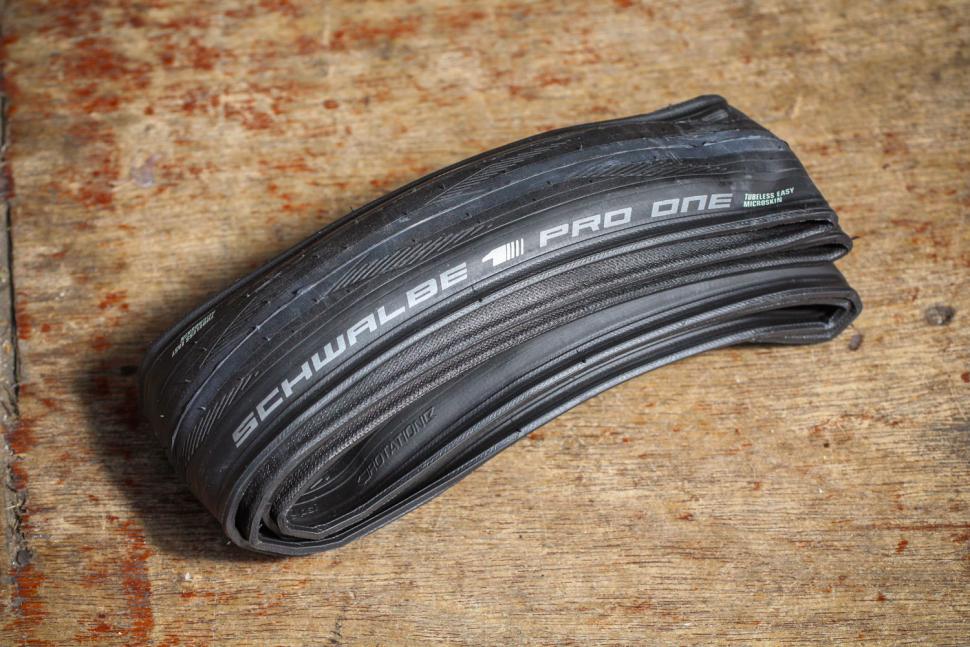 Schwalbe Pro One
Schwalbe Pro One£66.99
VERDICT:
One of the fastest, grippiest and easest to fit tubeless-ready race tyres on the market
Weight:
290g
Contact:
At road.cc every product is thoroughly tested for as long as it takes to get a proper insight into how well it works. Our reviewers are experienced cyclists that we trust to be objective. While we strive to ensure that opinions expressed are backed up by facts, reviews are by their nature an informed opinion, not a definitive verdict. We don't intentionally try to break anything (except locks) but we do try to look for weak points in any design. The overall score is not just an average of the other scores: it reflects both a product's function and value – with value determined by how a product compares with items of similar spec, quality, and price.
What the road.cc scores meanGood scores are more common than bad, because fortunately good products are more common than bad.
- Exceptional
- Excellent
- Very Good
- Good
- Quite good
- Average
- Not so good
- Poor
- Bad
- Appalling
The Schwalbe Pro One Tubeless Easy (TLE) folding tyre is up there with the best race tyres on the market. Grippy, fast rolling and simple to fit, with or without a tube, they're a great choice for your race bike. If durability is your main goal, though, you might want to look elsewhere in the range.
- Pros: Quick and easy fitment to pretty much any rim; very sticky compound
- Cons: Heavier than the non-tubeless options
Although Schwalbe has just announced that a brand new version of the Pro One TLE is on its way for 2020, that is no reason to shun the latest version that is still out there on the shelves, especially considering you can pick them up for nearly half the rrp.
> Find your nearest dealer here
As part of its top end Evo Line, the Pro Ones use Schwalbe's Triple compound which is soft and much grippier than the Onestar compound found on the standard non-tubeless One.
Chucking the bike into tight corners or roundabouts at speed shows the level of grip on offer in both the wet and dry, plus the tyres give a really direct feel of the road thanks to the suppleness of the rubber.
Grip when braking is impressive, too, especially when you grab a handful of the front lever.
Compared to the standard Ones that I swapped them out for, the Pro Ones feel much quicker at the same relative tyre pressures, rolling very nicely indeed. You can use the Pro Ones with a tube if you like, but their design is aimed mostly for tubeless running.
Schwalbe's Microskin is a high tensile micro fabric which is vulcanised together with the rubber and carcass to envelop the entire tyre, sealing it for tubeless use (it reduces the porousness of the sidewall to keep the sealant in) and increasing puncture protection.
This all adds a bit of weight, mind. The Pro Ones (25mm) weigh 290g on our scales (higher than the claimed 255g), with a 28mm One coming in at 252g, and that's including the V-Guard strip under the rubber, which arguably adds better puncture protection.
The Pro Ones are among the easiest tubeless tyres I've had to fit on the majority of rims, using the Beto Surge Tubeless Floor Pump. Only one set of wheels didn't see the tyre beads pop straight onto the hook of the rim and I had to use a tube first to get the tyre to sit right.
When fitted and full of sealant they do a decent job of retaining their pressure, especially after the first ride has spun the sealant constantly around the inside of the tyre to find all the little nooks and crannies. Running them at 100psi they'd lose about 20psi a week.
I've already mentioned that you can get these discounted at the moment – £37.99 from some outlets – but even when you go by the full rrp of £66.99 they are competitive with the opposition.
> Buyer's Guide: 34 of the best road cycling tyres
The highly rated Continental Grand Prix 5000 TL are 302g and slightly more expensive at £69.95, while the tubeless version of the Maxxis High Roads (review coming very soon) will set you back £59.99. They aren't as fast rolling as the Schwalbes, but they offer excellent grip in both the wet and dry.
Overall, the current Schwalbe Pro Ones are still top of the heap – simple to fit, grippy and fast rolling – but they are increasingly surrounded by some very good competition.
Verdict
One of the fastest, grippiest and easest to fit tubeless-ready race tyres on the market
road.cc test report
Make and model: Schwalbe Pro One tyre
Size tested: 25mm
Tell us what the product is for and who it's aimed at. What do the manufacturers say about it? How does that compare to your own feelings about it?
Schwalbe distributor Chicken Cycle Kit says, "The fastest road tyre in the world. The next generation of tubeless tyres. A truly thrilling ride. It's fast. It's reliable. It's light. The patented MicroSkin construction makes this all possible. The rolling resistance is minimal! All round cut resistance and puncture protection are extraordinary, especially in combination with Doc Blue Professional sealant. This is the absolute top model from Schwalbe! You can also use the Schwalbe Pro One with a normal tube, but its true strengths are experienced only in tubeless form."
I think they are one of the fastest, grippiest race tyres on the market.
Tell us some more about the technical aspects of the product?
Chicken lists these features:
TUBELESS READY
PROTECTION: MicroSkin, Tubeless Easy. The patented construction consists of a high-tensile micro fabric which is vulcanized together with the rubber compound and the carcass. MicroSkin envelops the entire carcass and facilitates a fault-free Tubeless Easy operation
COMPOUND / TPI: OneStar triple compound developed just for the ONE range / 127 TPI
WEIGHT: 235g (23c) / 255g (25c) / 275g (28c)
Rate the product for quality of construction:
9/10
Rate the product for performance:
9/10
Rate the product for durability:
7/10
Rate the product for weight (if applicable)
7/10
Rate the product for value:
5/10
Tell us how the product performed overall when used for its designed purpose
As a race tyre it performs exactly as it should, grippy and fast.
Tell us what you particularly liked about the product
Excellent grip levels.
Tell us what you particularly disliked about the product
Heavier than the non-tubeless standard One version.
How does the price compare to that of similar products in the market, including ones recently tested on road.cc?
Continental Grand Prix 5000 TL is £69.95, while the Maxxis High Road is £59.99.
Did you enjoy using the product? Yes
Would you consider buying the product? Yes
Would you recommend the product to a friend? Yes
Use this box to explain your overall score
They cover everything expected by a quality race tyre, and even though the puncture protection isn't the greatest it's easily acceptable for the type of tyre.
About the tester
Age: 40
I usually ride: This month's test bike My best bike is: B'Twin Ultra CF draped in the latest bling test components
I've been riding for: Over 20 years I ride: Every day I would class myself as: Expert
I regularly do the following types of riding: time trialling, commuting, club rides, sportives, fixed/singlespeed
Since writing his first bike review for road.cc back in early 2009 senior product reviewer Stu has tested more than a thousand pieces of kit, and hundreds of bikes.
With an HND in mechanical engineering and previous roles as a CNC programmer/machinist, draughtsman and development engineer (working in new product design) Stu understands what it takes to bring a product to market. A mix of that knowledge combined with his love of road and gravel cycling puts him in the ideal position to put the latest kit through its paces.
He first made the switch to road cycling in 1999, primarily for fitness, but it didn’t take long for his competitive side to take over which led to around ten years as a time triallist and some pretty decent results. These days though riding is more about escapism, keeping the weight off and just enjoying the fact that he gets to ride the latest technology as part of his day job.
Latest Comments
- Rendel Harris 17 min 34 sec ago
I am completely fed up with entitled motorists coming to a cycling website and creating an account solely in order to troll. Give it a rest!
- Pot00000000 38 min 33 sec ago
👍🏼 IMHO, one of the main things to look out for is butted tubes, double or even tripple butted. ride safe and have a great Christmas
- quiff 1 hour 40 min ago
Ah yes, just spotted where "performance line" is quoted on the website. Couldn't see any that fall into both 'evolution' and 'performance' line...
- Rendel Harris 1 hour 52 min ago
TRP cable-actuated hydraulic calipers, haven't tried them myself but reviews generally rate them as better than cable-only brakes such as Sora. I...
- wtjs 2 hours 6 min ago
And we can be sure that Police Scotland would be similarly disinterested...
- wtjs 2 hours 10 min ago
The self-professed cyclists are really self-claimed cyclists of the 'I'm a cyclist myself' variety
- slc 3 hours 21 min ago
They should read scampercraft and not exaggerate the danger of scuttling along. I discourage squirrel predation by acting like one.
- HalfDanHalfBiscuit 3 hours 31 min ago
You can get the Varia for £10 less from Decathlon.
- Geoff H 4 hours 5 min ago
Perhaps they should apply the same standard to dangerous, unsafe, poorly designed roads and COMPLETELY rip them out rather than "fix" or "redesign"...

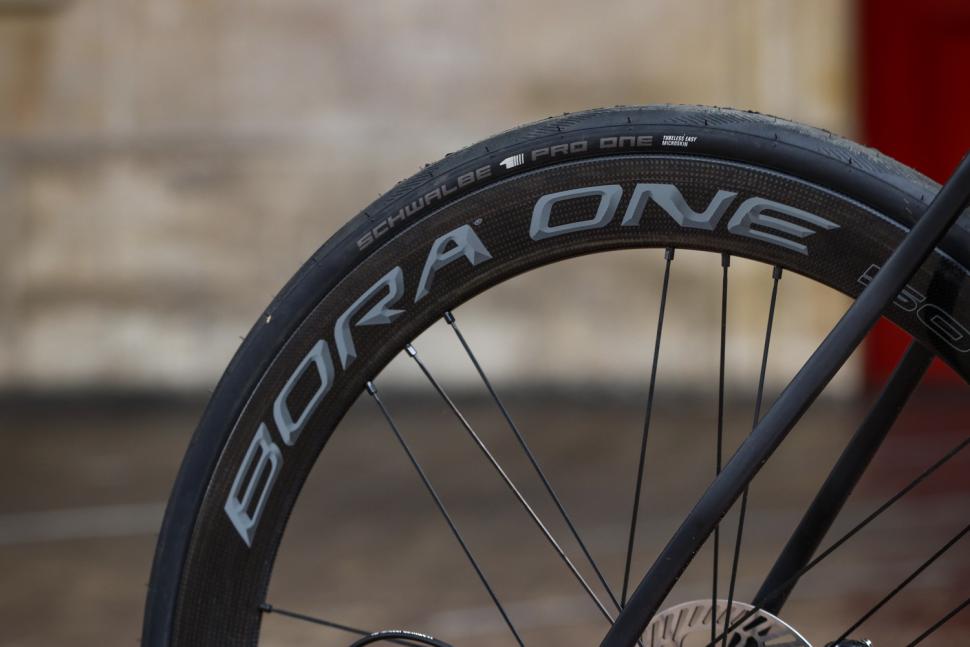
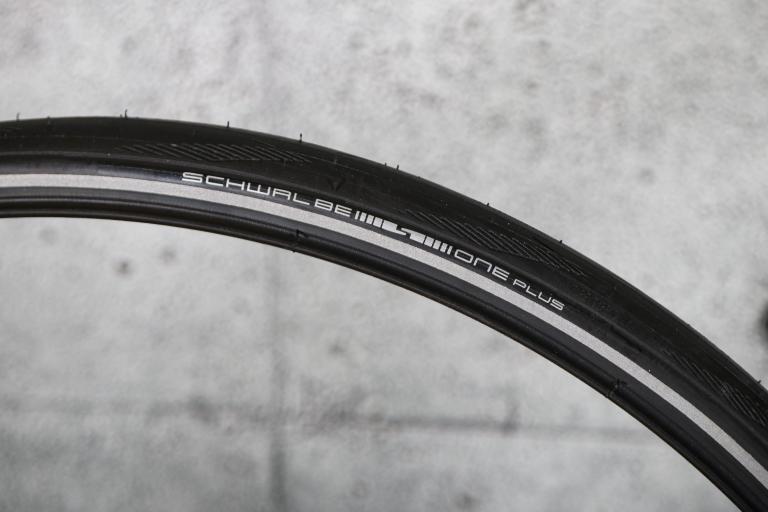
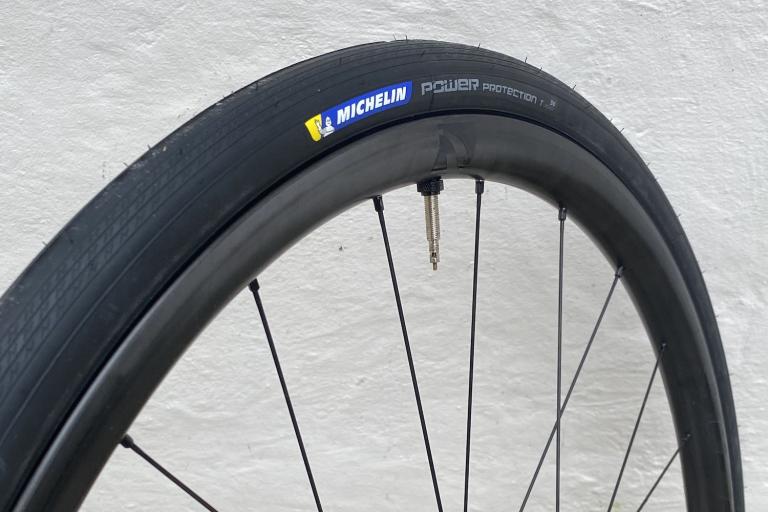
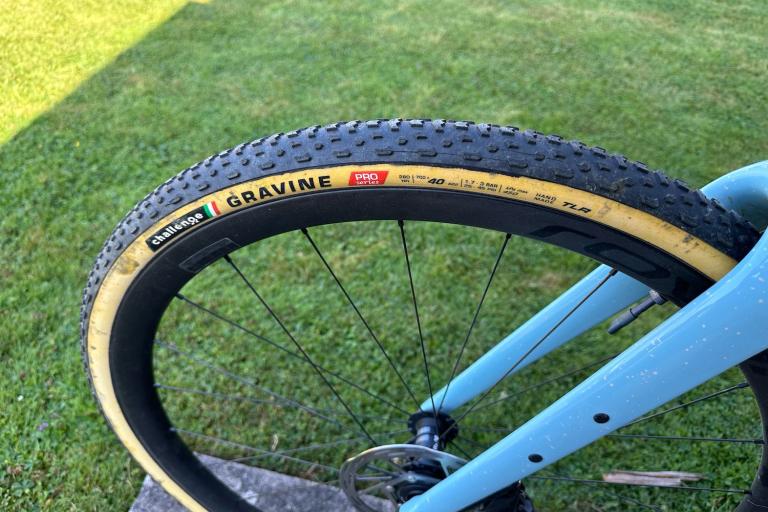
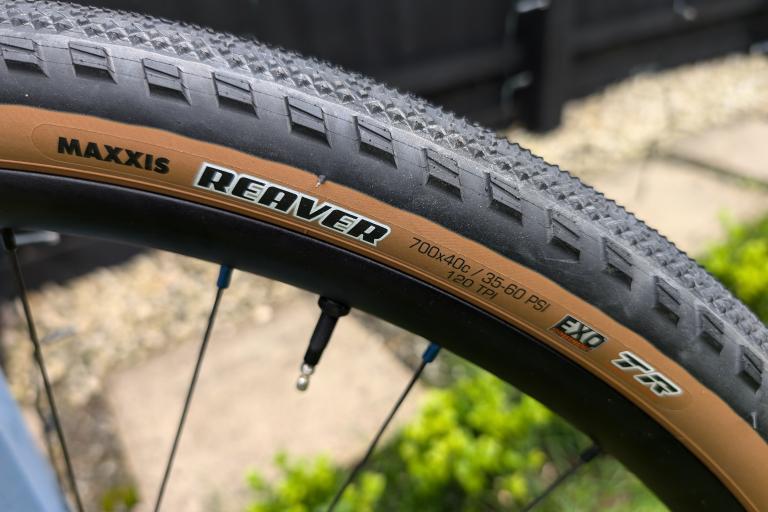
Add new comment
14 comments
From my experience these are NOT suitable for winter or usual poor quality UK lanes use. Had fitted to a new set of wheels in October 19 and cut up very quickly. 2 punctures in each tyre in first two weeks. One sealed, three didn't and needed plugging. Thought 30mm at low pressure might last a bit, but after I had a 3/4" cut in a brand new replacement rear a week later, I gave up and binned them. never made it to 500km. Felt like they would probably be great on smooth clean roads, but I don't have that luxury.
They're race tyres.
Awesome tyre, in the dry.
Diabolical tyre, in the wet,
Thanks, I might give these a go then when my current GP5000 23s are ready for replacement. Won't be long I'm sure as I'll be starting to commute on them soon.
The main benefit of going tubeless, is using a larger tyre which allows for less rolling resistance using much lower pressures. This also benefits the sealant properties allowing for a more reliable seal because the pressure doesnt force out the selant before it begins to work.
25mm are a good road size, I have set on my wheels I take touring abroad. I tend to use 30mm+ tubeless in the UK-crap roads.
If your frame can take larger, try 28mm, rim size wont alter size so much, its about frame clearance
A larger tyre doesn't mean less rolling resistance, a larger tyre increases the contact patch so can give you more grip.
Tubeless will usually give you less rolling resistance (depending on your tyre) and allows you to run lower pressures regardless the size of the tyre. Lower pressures will usually mean more comfort and also in most cases more speed too.
I've recently gone 'back' to a 23mm tyre (tubeless) on the front and have been running it at 80 to 85psi. In a previous life I'd have run a 23mm tubed tyre at 110psi.
A wider tyre, all other things being equal, should typically reduce rolling resistance at the same pressure, due to reduced sidewall losses (same contact area, less elongated front-to-back). As you reduce the pressure that rolling resistance will tend to increase (as will contact area and nominal footprint), so it's a trade-off between comfort, grip and outright efficiency.
Love mine, especially for the grip and the feel. They are a little prone to cutting, and might not be the tyre for you but I get plenty of mileage out of mine.
How do they compare to GP5000 TLs? I'd like to convert to tubeless but the GP5000 TLs only come in 25 and up which is too wide for my wheels. 23mm GP5000s measure 25 already on my wheels and fit perfectly. GP5000s last me 2/3000 miles.
I have fewer miles on my GP5000 TLs (on another bike) but I honestly can't tell huge amounts of difference between the two. This is riding on bog standard UK roads with the usual mix of tarmac, road dressing and potholes. Both 25mm and measuring up slightly wider on the rims I have (Bontrager Paradigm Comp and Token Konax).
I would say they are similar but I have no direct experience of the GP5000. But coming from the predecessor, the GP4000 I found an increase in grip and a nicer feel. The GP5000 TL appears to come up a little smaller than a Pro-One size for size, but the 23mm pro one is a nice match for a 25mm outer width rim with 19mm internal width.
I think the outer width of the 23 on the 25/19 rim is 25.8mm, height noticably less than the 25mm which came to 27.3mm width (i just rechecked at 80psi)
I have the 25mm on my 30mm wide rims with 23mm internal width, and they come up to about 29.5mm. I run those at around 70psi for a good balance between comfort and squirm.
I used to have the 28mm TL versions of the PRO1. Once they got a fatal cut/puncture I changed to the 28mm GP5000 TL. The Contis actually run a bit narrower on my rims.
Be warned. It won't last 5 minutes.
Over 1,000 miles on mine and still going strong. I guess it depends on where you ride.